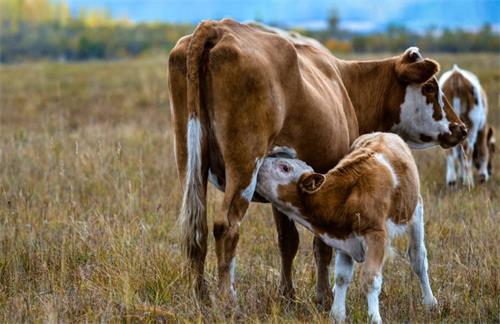B-ultrasound for cattle is one of the measures to improve the survival rate of calves.
We should pay close attention to the fetal preservation of pregnant cows, and do a good job of fetal preservation after the full-birth cows are pregnant to ensure the normal development and safe delivery of the fetus. B-ultrasound for cattle plays a big role in this. There are three physiological reasons for miscarriage: one is the death of the fetus in the middle of pregnancy; the second is the sudden abnormal contraction of the uterus; the third is the disorder of reproductive hormones in the mother's body, the change of the mother, and the loss of the ability to preserve the fetus. These situations can be well checked on B-ultrasound for cattle.
Within 2 months of pregnancy, the embryo is still free in the uterus and gradually completes the implantation process. The fetus transitions from relying on uterine milk secreted by the endometrium as nutrition to relying on the placenta to absorb the mother's nutrition. During this period, the nutrition is too low, the feed quality is too poor, and the secretion of uterine milk is insufficient, which will affect the development of the embryo and even cause embryo death and miscarriage. In this case, even if the calf is born, the weight is very small, the development is hindered, and it is easy to die. Therefore, B-ultrasound for cattle should be used frequently to observe the embryo in the early pregnancy.
In terms of management, pregnant cows should exercise or work properly and should not be overworked. During pregnancy, it is necessary to prevent fright, whipping, slipping, and hitting the rack, especially for pregnant cows with abortion habits. If the cows feel abnormal during B-ultrasound observation, if necessary, measures to protect the fetus should be taken, such as taking anti-fetus drugs or injecting progesterone.
Strengthen calf cultivation and ensure full survival. The nutritional level of pregnant cows is closely related to the birth weight and health status of calves. Calves with heavy birth weight are generally easier to survive. After the calf is born, the calf should be fed with colostrum as soon as possible, preferably 2-3 hours after birth, to enhance the calf's resistance. Early supplementary feeding of calves can promote the development of the cow's stomach, which is more obvious in B-ultrasound observation of cattle. Generally, supplementary feeding can be done 2-3 weeks after birth. Initially, only 50-100 grams of supplementary feeding is given daily, and then it will gradually increase with growth. After 3 weeks, some high-quality hay can be added to promote the growth and development of the calf. Newborn yellow calves and beef calves generally live with their mothers for breastfeeding. They should have a free place to move around and increase their exercise to exercise their physique.
Ultrasound for cattle is used to prevent dystocia caused by diseases in cows
Dystocia caused by diseases in cows. Before artificial insemination, cows had endometritis, vaginitis, incomplete uterine involution, pelvic fracture, vaginal abscess, birth canal injury, retained placenta, abdominal injury and other diseases that were not completely cured. Breeding caused diseases in cows, leading to metabolic disorders in cows, causing reproductive hormone secretion disorders, and making the cows lack the necessary oxytocin and other hormones, so that the soft birth canal cannot relax and open incompletely, causing dystocia in cows. When preventing these diseases, it is necessary to use cattle B-ultrasound to check them frequently. The above diseases can generally be basically diagnosed by cattle B-ultrasound, so cattle B-ultrasound is very useful in preventing such diseases. Old, disabled and sick cows are not eliminated in time, and cows are not able to produce enough power when calving, causing dystocia in cows. 20 days before delivery, some cows suffer from hypocalcemia, ketosis and other diseases without clinical symptoms, which makes it difficult for farmers to find them, resulting in a long period of calving. Therefore, before mating, the health of the cows should be checked in time, and the cows with diseases must be cured before mating. After using B-ultrasound for cattle, sick, old and disabled cows should be eliminated in time to ensure that the fetus has a good growth and development environment and the cows in labor have sufficient production capacity. Avoid inbreeding.
The technical level of the mating personnel and the operation level of the artificial insemination technicians also have a great impact on the delivery of cows. Some personnel are not standardized in the storage and use of frozen semen, the artificial insemination process, and other operations, and are not skilled in technology. Some frozen mating personnel mated the sick cows without curing them in time for the sake of profit; some did not reasonably grasp the frozen mating time and body size of the cows and mated them too early, causing dystocia in the cows. Therefore, it is necessary to increase the professional training of mating technicians before taking up their posts, master the mating technology, reduce the dystocia rate, increase the mating rate, and thus improve the economic benefits of frozen semen mating.







